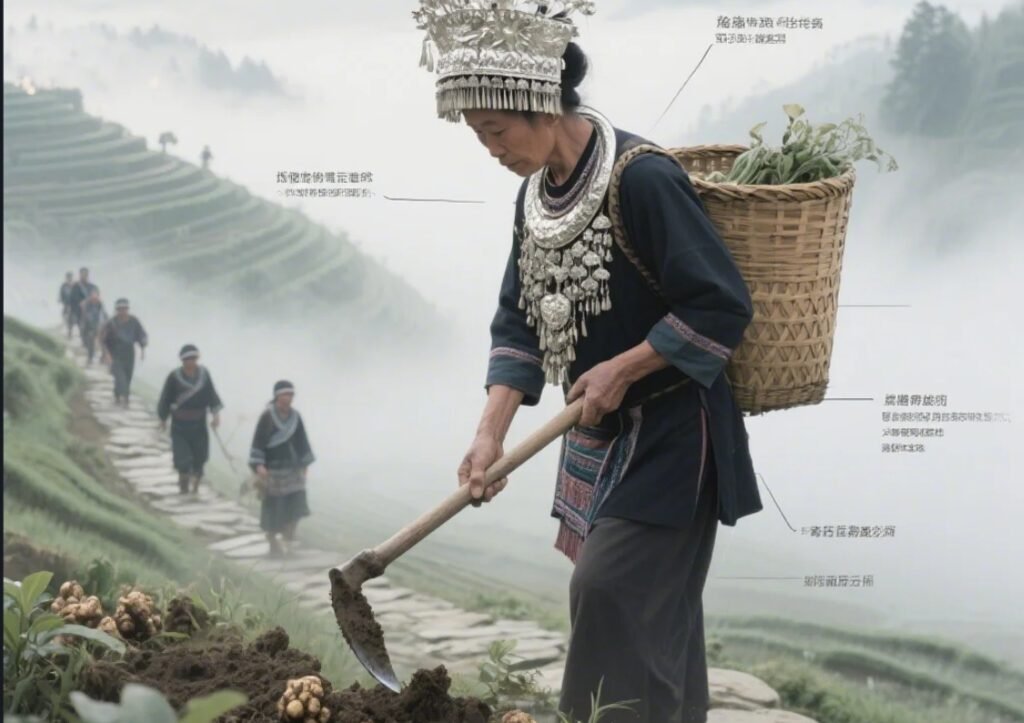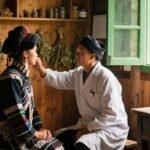Biguagoulang’obilangmeng (Nephritis)
Overview
In Miao medicine, nephritis is known as Biguagoulang’obilangmeng. It is believed to be caused by a weak constitution and external invasions of wind, cold, dampness, and heat toxins. Clinical manifestations include edema (especially around the eyelids and face), hematuria, and oliguria.
From the perspective of Traditional Chinese Medicine (TCM), nephritis results from exogenous pathogens, improper diet, or overexertion. These lead to dysfunctions in the lungs, spleen, and kidneys, resulting in water retention. Clinically, it is characterized by facial and peripheral edema, back pain, and dysuria.
In Western medicine, nephritis encompasses conditions such as glomerulonephritis, interstitial nephritis, hepatitis B-associated nephritis, and idiopathic acute tubulointerstitial nephritis. These are immune-mediated inflammatory conditions that cause varying degrees of kidney impairment, with symptoms like edema, hematuria, oliguria or anuria, hypertension, fatigue, and lumbar pain.
Miao Medicine Syndrome Classification
Biguagoulang’obilangmeng is classified as a major syndrome and includes three subtypes:
Cold Meridian Qi Deficiency Nephritis
Hot Meridian Wind-Heat Nephritis
Hot Meridian Damp-Heat Nephritis

Etiology
Miao medicine attributes this disease to upper circulatory deficiency and lower hyperactivity. When the upper circulation weakens, the lower part becomes overstimulated in order to compensate for systemic needs, leading to pathological excitation. Thus, a weakened constitution is the root, while external pathogens are the triggers.
Pathogenesis
Impaired upper circulation combined with hyperactive lower circulation results in organ deficiency, particularly affecting the lung, spleen, and kidney functions. This leads to symptoms like fatigue, fluid retention, and metabolic disturbances:
Kidney yang deficiency causes poor fluid transformation, resulting in edema and oliguria.
Ascending water pathogens manifest as facial swelling.
Kidney yin deficiency with blood heat leads to hematuria.
Diagnostic Essentials
1. Diagnostic Criteria:
Presence of proteinuria, hypoproteinemia, hyperlipidemia, and edema.
Progression may involve renal dysfunction, anemia, and electrolyte imbalance.
Diagnosis is confirmed through symptom patterns, laboratory tests, and clinical history.
2. Relevant Tests:
Complete blood count, urinalysis, kidney function tests, 24-hour urine protein, serum complement levels.
Renal ultrasound may be used to rule out structural abnormalities.
Differential Diagnosis
1. Pugaqiu (Hydropathy):
Both conditions cause edema, but in Pugaqiu, abdominal distension is dominant with thin limbs and exposed abdominal veins. It’s often associated with chronic liver disease, while Biguagoulang’obilangmeng features urinary dysfunction and whole-body swelling.
2. Dong’ouwa’ounu (Strangury Syndrome):
Both may involve hematuria, but Dong’ouwa’ounu presents with painful urination. In contrast, Biguagoulang’obilangmeng typically shows painless hematuria, sometimes with mild discomfort.
Classification and Treatment
1. Cold Meridian Qi Deficiency Nephritis
Symptoms: Facial and generalized edema, heaviness, aversion to cold, absence of sweat, severe oliguria or anuria.
Meridian Classification: Cold meridian (cold disease)
Treatment Principles: Tonify qi and nourish blood; promote urination and reduce swelling.
Herbal Formula:
Epimedium (Yinyanghuo) – 8g
Cuscuta seed (Tusizi) – 10g
Black Atractylodes (Heichou) – 10g
White Atractylodes (Baichou) – 10g
Sword Bean (Daodou) – 8g
Codonopsis root (Dangshen) – 10g
Preparation: Decoction.
Explanation: Tonifies kidney yang, boosts qi, and expels retained fluids.
2. Hot Meridian Wind-Heat Nephritis
Symptoms: Rapid onset of facial edema, fever, aversion to wind, with or without sweating, headache, asthma, lumbar pain, scanty urine.
Meridian Classification: Hot meridian (hot disease)
Treatment Principles: Disperse wind and relieve surface; promote urination and reduce swelling.
Herbal Formula:
Honeysuckle flower (Jinyinhua, jin yin hua) – 8g
Peppermint (Bohe, bo he) – 5g
Whiteflower Peucedanum (Baifaqianhu, bai fa qian hu) – 15g
Cicada slough (Chantui, chan tui) – 5g
Schizonepeta (Jingjie, jing jie) – 5g
Preparation: Decoction.
Explanation: Clears heat, disperses wind, and detoxifies.
3. Hot Meridian Damp-Heat Nephritis
Symptoms: Generalized edema with shiny lower limbs, abdominal fullness, irritability, thirst, poor appetite, yellow urine, and dry stools.
Meridian Classification: Hot meridian (hot disease)
Treatment Principles: Clear heat and dampness; facilitate urination.
Herbal Formula:
Knotgrass (Biandou) – 6g
Phellodendron bark (Huangbo) – 6g
Lysimachia (Jinqiancao) – 8g
Rhubarb root (Dahuang ) – 4g
Preparation: Decoction.
Explanation: Clears damp-heat, detoxifies, and supports urination.
Preventive Care
Avoid greasy foods and excessive alcohol. Maintain regular routines and balanced lifestyle.
Prevent overexertion and cold exposure. Moderate physical activity helps strengthen immunity.
Maintain emotional well-being and avoid stress—key factors in preventing nephritis.
Commentary
In Miao medicine, diseases are broadly categorized into cold and hot types, with further classification into cold meridians, hot meridians, fast/slow meridians, and half-side meridians. Treatment strategies are developed accordingly. The Miao belief of “no disease without toxin” guides their use of detoxification methods—eliminating, dispersing, attacking, or expressing toxins. In Biguagoulang’obilangmeng, tonifying the body and expelling pathogens should be done in tandem to achieve effective healing.



Leave a Reply